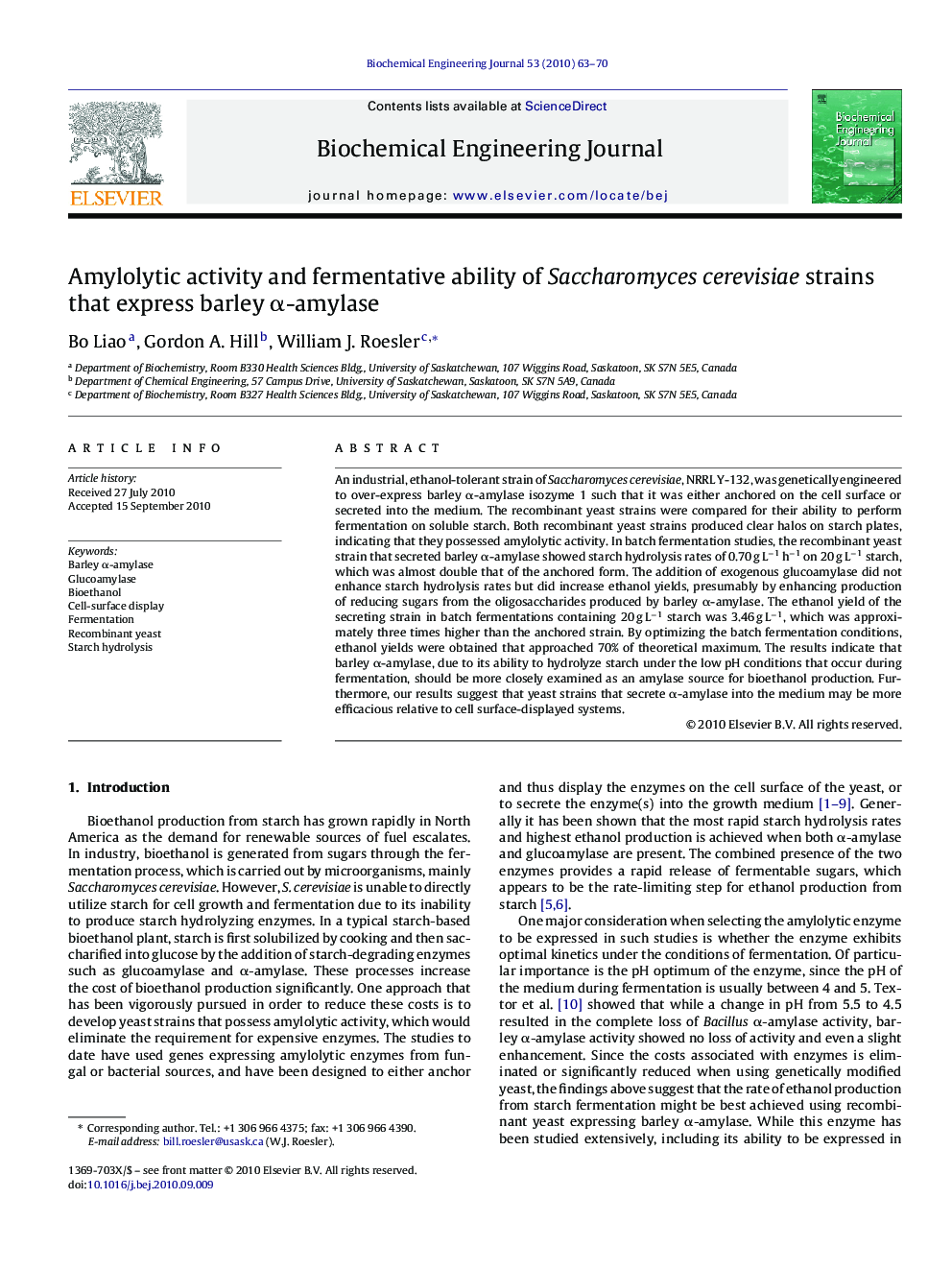| Article ID | Journal | Published Year | Pages | File Type |
|---|---|---|---|---|
| 3809 | Biochemical Engineering Journal | 2010 | 8 Pages |
An industrial, ethanol-tolerant strain of Saccharomyces cerevisiae, NRRL Y-132, was genetically engineered to over-express barley α-amylase isozyme 1 such that it was either anchored on the cell surface or secreted into the medium. The recombinant yeast strains were compared for their ability to perform fermentation on soluble starch. Both recombinant yeast strains produced clear halos on starch plates, indicating that they possessed amylolytic activity. In batch fermentation studies, the recombinant yeast strain that secreted barley α-amylase showed starch hydrolysis rates of 0.70 g L−1 h−1 on 20 g L−1 starch, which was almost double that of the anchored form. The addition of exogenous glucoamylase did not enhance starch hydrolysis rates but did increase ethanol yields, presumably by enhancing production of reducing sugars from the oligosaccharides produced by barley α-amylase. The ethanol yield of the secreting strain in batch fermentations containing 20 g L−1 starch was 3.46 g L−1, which was approximately three times higher than the anchored strain. By optimizing the batch fermentation conditions, ethanol yields were obtained that approached 70% of theoretical maximum. The results indicate that barley α-amylase, due to its ability to hydrolyze starch under the low pH conditions that occur during fermentation, should be more closely examined as an amylase source for bioethanol production. Furthermore, our results suggest that yeast strains that secrete α-amylase into the medium may be more efficacious relative to cell surface-displayed systems.
Research highlights▶ • An industrial strain of S.cerevisiae was engineered to express barley α-amylase ▶ ▶ • Barley α-amylase was either secreted or anchored in the cell wall ▶ ▶ • The yeast strain secreting the enzyme showed greatest amylolytic activity ▶ ▶ • Addition of exogenous glucoamylase enhanced ethanol yields from soluble starch
